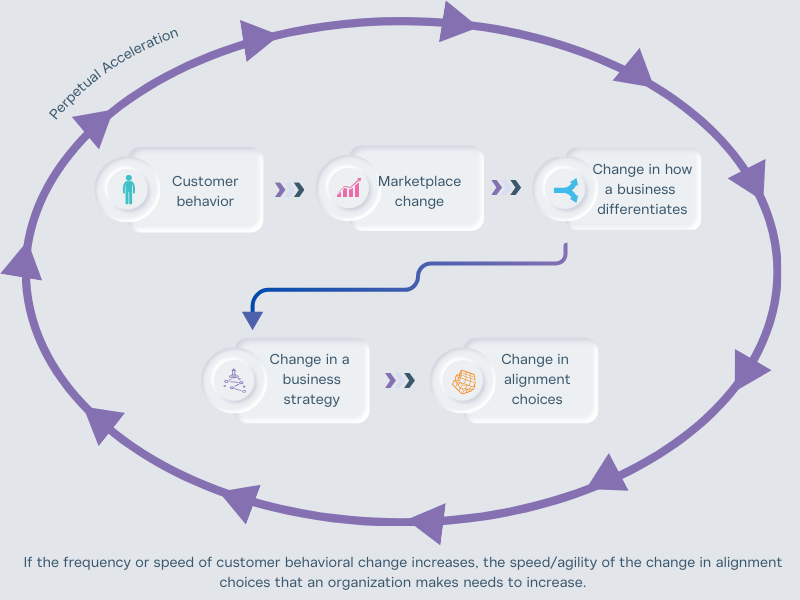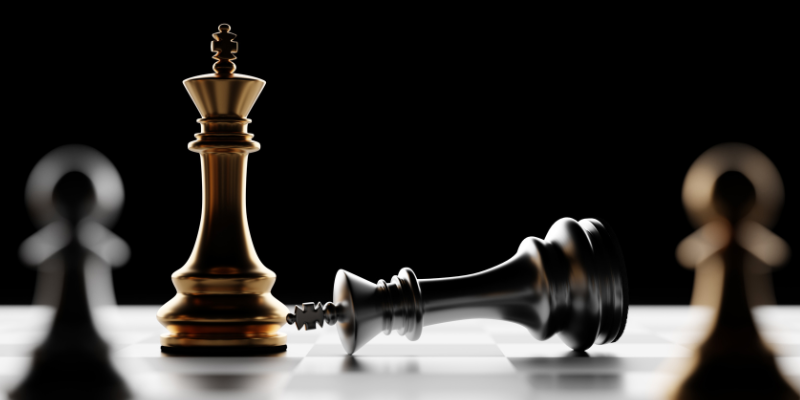As we work with senior HR leaders, one of their biggest concerns is keeping up with rapid change. They often ask, “How can we design our organization in a faster, more agile way that aligns with the needs and style of the business leader?”
The solution to this challenge lies in combining strategic planning with organizational alignment, something we call “liquid design.” In our book Mastering the Cube, we explain that “liquid design” means that large organizations should be in a constant state of change, with divisions or groups being regularly renewed and realigned. It’s about creating an environment where organizational design is built into the business, so executives and leaders own the design process.
But how can liquid design benefit your organization? Let’s break it down.
The Never-Ending Reorganization Loop
As markets evolve faster than ever, organizations must adapt their strategies just as quickly. Business structure and processes can’t be set in stone. New ideas need to be quickly integrated into organizational systems like culture, leadership, and rewards. Organizations that can do this will be able to innovate, adapt, and stay ahead of competitors. Those that don’t will fall behind.
Here’s the typical process we see today: every few years, a leader decides that the organization is misaligned. This might be triggered by a new strategy, a merger, or the arrival of a new leader. So, they call in experts and launch a major project to redesign the structure, bringing leaders together for months to create a new plan. After that, they spend another 18 months transitioning to the new setup, and another 18 months getting comfortable with the changes. Just as everyone adjusts, something else happens, and the cycle begins again.
This constant cycle is expensive and increasingly ineffective. Instead of addressing the root cause, we often just improve the change management process. But there’s a better way.
Building Continuous Alignment Into Your Organization
The solution is to move away from “organization design projects” that happen once in a while and adopt continuous alignment. Rather than letting your organization get so messy it’s unworkable, we need to clean as we go, putting things back in place before they get out of alignment.
Think of it like house cleaning. Instead of waiting for your house to get so messy that it’s unbearable, you tidy up regularly so it stays manageable. Liquid design is the capability that allows an organization to constantly realign, just like cleaning up as you go.
How do we make this happen? First, we need to make organizational design part of the business’s ongoing processes. One way to do this is by integrating “alignment wellness checks” into regular strategic planning cycles. For example, quarterly business reviews are a great time to ask, “How does this change affect each part of our organization?”
Leaders should be asking questions like:
- Has the purpose of our organization shifted?
- Are we delivering the right value to our customers or key stakeholders?
- Do we have the necessary capabilities to meet those needs?
- Are our systems (work, structure, metrics, people, rewards, leadership, culture) aligned to support these capabilities?
Leaders should also evaluate divisions and functions on a regular basis to find areas for improvement.

By regularly checking in and adjusting, leaders can identify areas that need to change before they become major problems. This way, instead of a big, disruptive overhaul every few years, the organization can make small, manageable changes over time. Now, leaders are cleaning as they go – not waiting for the house to become a disaster zone.
Giving Leaders the Right Tools for Continuous Alignment
To make this new approach work, leaders need to be equipped with the right tools and mindset. For too long, organizational design and change management have been handled by outside experts. While experts still have a place, ownership needs to shift to the leaders of the organization. Aligning the organization to its strategy should be their primary responsibility, and it’s the most important work they do.
At every level of the organization, leaders should be thinking about alignment and design. But, to do this effectively, they need the proper tools. When HR leaders hear this advice, they often ask, “That’s great, but how do we get leaders to actually do this?” The answer is simple: leaders already want to be organization designers. Every time they call for a reorganization, adjust the business model, or try to improve efficiencies, they’re designing their organization.
The problem is that many leaders are novices at this, trying to design a multi-billion-dollar organization without the right tools or experience. That’s where experts come in – not to drive the process, but to teach and coach leaders, helping them become more effective at leading the design process.
The organizations that embrace liquid design will have the edge in the future. They will be agile and adaptable, able to respond to changing markets and customer demands. And they will win.





